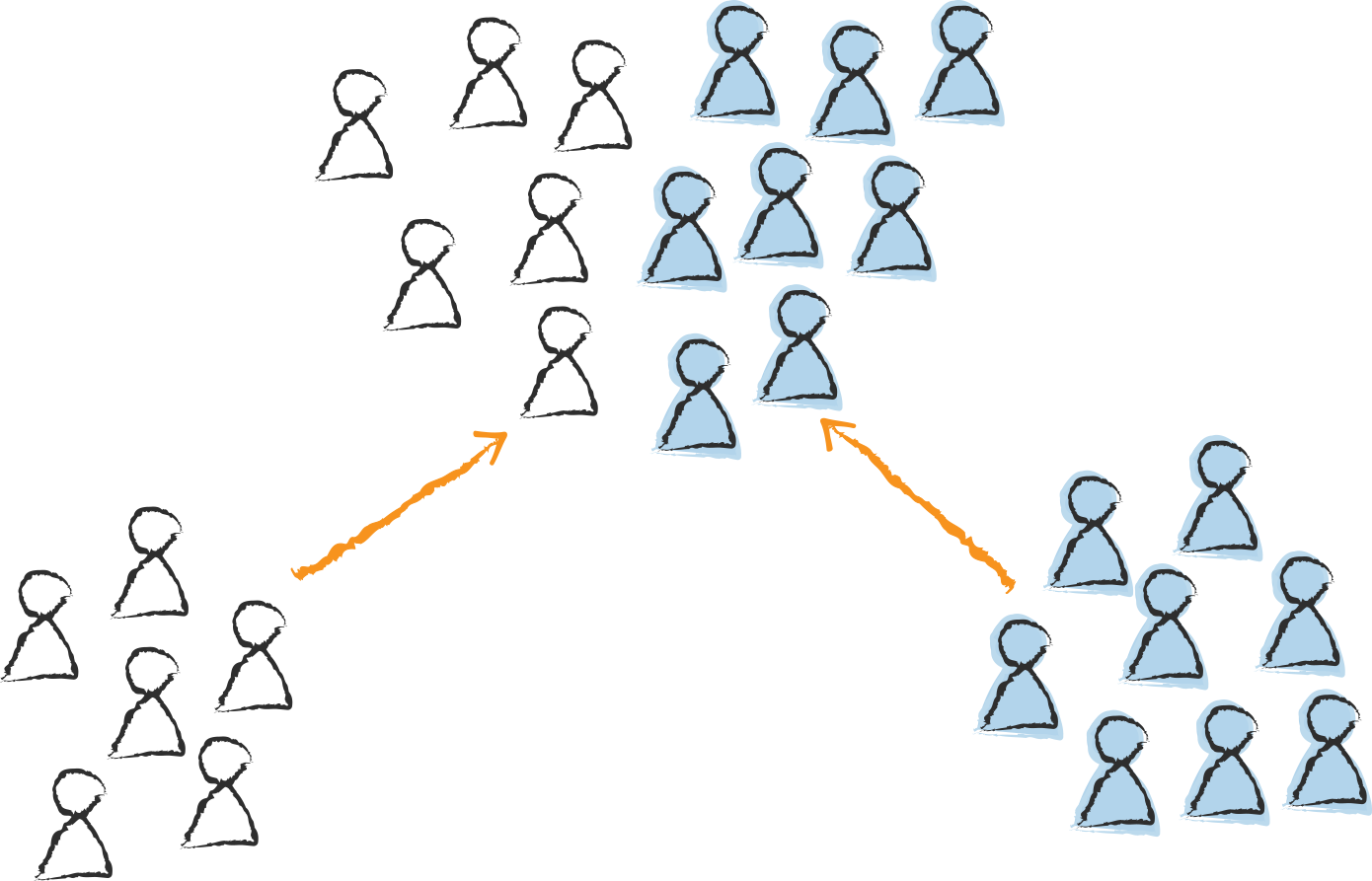Chapter 8. Merging Pattern
Another pattern often driven by the work at hand is the merging pattern. The merging pattern is just like it sounds: it’s when two or more teams or entities combine together, as shown in Figure 8-1.

Figure 8-1. Merging pattern
So why merge teams, especially considering the benefits that smaller teams yield, which we went over in Chapter 6?
Well, maybe you want to combine teams in order to harvest their collective intelligence to tackle a specific challenge. Or, maybe you feel that having one team per work area is confining, and you desire more fluidity in your work allocation by reteaming within a larger team. Even beyond that, maybe your company wants to acquire another company so that you combine forces and can more quickly offer a feature set that could save your company years of development time. These are some of the scenarios in which the merging pattern comes into play.
This section has stories from the team level, the tribe level, and the company level to explore this pattern, starting with a story from New Zealand. Pitfalls from this pattern are also discussed, related to some very challenging mergers.
Merging Teams to Enable Pair Programming Variety
At the division of Trade Me where delivery manager William Them worked, they experimented with self-selected teams when working on a project to make their web frontend responsive, or able to be ...
Get Dynamic Reteaming, 2nd Edition now with the O’Reilly learning platform.
O’Reilly members experience books, live events, courses curated by job role, and more from O’Reilly and nearly 200 top publishers.

